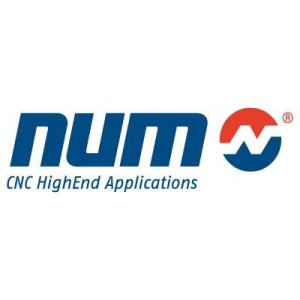 Thanks to innovative sharing facility that will enable designers to create machine tools of unprecedented versatility and productivity CNC axis paves way for more versatile machine tools. It provides a very flexible and efficient means of controlling a high number of functionally interrelated groups of motion axes, by using advanced dynamic resource allocation techniques to share control across multiple CNC kernels.
Thanks to innovative sharing facility that will enable designers to create machine tools of unprecedented versatility and productivity CNC axis paves way for more versatile machine tools. It provides a very flexible and efficient means of controlling a high number of functionally interrelated groups of motion axes, by using advanced dynamic resource allocation techniques to share control across multiple CNC kernels.
Typical applications include multi-station production centres and rotary transfer machines with complex multi-role axis control requirements. The new axis sharing facility further extends the flexibility of NUM’s high-end Flexium+ 68 CNC architecture by allowing the control of up to 32 servo drives to be time shared by any of the CNC kernels in the system. Until now, it was only possible to share control of axes across the eight CNC channels of each individual Flexium+ 68 CNC kernel in a system.
While this is more than adequate for most applications, some of the latest generation production machining centres and rotary transfer machines have a high number of stations, each typically comprising a multi-axis head (using the B and C axes) that is shared by several separate machining units in each station. Each machining unit is best served by having its own dedicated CNC channel, with control of the shared multi-axis heads being passed from one channel to another as the machine cycle progresses.
For example, a transfer machine with a main rotary table that has 12 stations, each comprising a dual-axis head that is shared with three machining units per station, would require a 36-channel CNC capability – one per machining unit. Each of these channels would need to control two shared axes, three local (or ‘fixed’) axes, and one or more spindles. All five axes of each machining unit must be fully interpolated, and the channel allocation of the two shared axes needs to change every time the rotary table indexes. This can now be achieved by using five Flexium+ 68 CNC kernels and axis sharing.
Each individual Flexium+ 68 CNC kernel accommodates any combination of interpolated axes or spindles – up to a combined total of 32 – and supports up to eight CNC channels. At any one time, each channel can control any of these axes or spindles and can either run its own part program asynchronously and operate autonomously (much as if it had its own dedicated CNC kernel), or it can be synchronised with any of the other seven channels. Control of the axes and spindles can be passed from one channel to another on-the-fly, to maximize use of hardware resources.
By using multiple CNC kernels and the new axis sharing facility, machine designers can now implement control schemes for virtually any type of machine tool, regardless of its complexity. The only system requirement is that all shared servo drives must be physically connected to the first CNC kernel in the system. NUM’s Flexium+ 68 CNC architecture is inherently scaleable and suitable for systems with more than 200 interpolated axes and spindles, and more than 50 CNC channels.
NUM’s market-leading Flexium+ CNC platform offers a choice of three configurations of CNC kernel, enabling machine designers to create cost- and performance-optimised control systems for a wide range of automation. In addition to the high end Flexium+ 68, the product series includes two configurations for less demanding applications.
Flexium+ 6 has a single CNC channel, can control four interpolated axes and a spindle, and is designed for machines of low to medium complexity. Flexium+ 8 is designed for more complex applications; it provides two CNC channels, either of which can control up to five interpolated axes, or four interpolated axes and a spindle. The Flexium+ platform is backed by powerful software. All CNC, servo drive, I/O, automation PLC and safety PLC functions are programmed using a single unified toolset. A fully customisable HMI allows users to add value to their machines, through improved ergonomics and touch-sensitive controls.
NUM’s application support software covers a broad range of machining functions, including part grinding, tool grinding, turning, milling, gear hobbing, shaping and finishing, as well as water-jet, laser and plasma cutting. Many of these software packages are nowadays regarded by machine tool manufacturers and users as industry standards.



